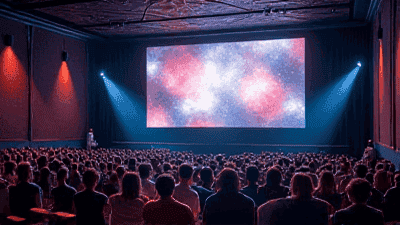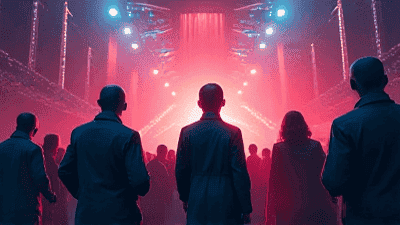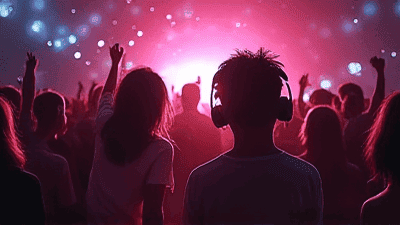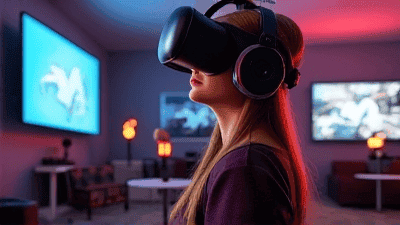
Computer-generated imagery, commonly known as CGI, has revolutionized the landscape of modern cinema in ways that were once inconceivable. From mesmerizing visual effects to the creation of entire animated worlds, CGI enables filmmakers to tell stories with stunning realism and imagination. As technology evolves, CGI continues to push the boundaries of cinematic expression, reshaping how audiences experience films.
The Evolution of CGI
Early Beginnings
The roots of CGI in cinema date back to the 1960s when pioneering animators began experimenting with computer technology to create visual effects. The short film “A Computer Animated Hand” by Ed Catmull showcased the basic capabilities of digital animation and laid the groundwork for future advancements. However, it was not until the late 1970s and early 1980s that CGI made a significant impact on mainstream cinema.
Breakthrough Moments
“Star Wars,” released in 1977, marked a turning point for visual effects in film. While not relying solely on CGI, the film utilized groundbreaking techniques that set the stage for future innovations. The true breakthrough for CGI came with “Tron” in 1982, which was the first feature film to use extensive computer-generated images. This paved the way for movies like “Jurassic Park” in 1993, where CGI was used to create lifelike dinosaurs that captivated audiences and changed the perception of what was possible in storytelling.
The Rise of Sophisticated Technology
As technology advanced, so did CGI's capabilities. The introduction of faster processors, improved algorithms, and more sophisticated software blossomed into an explosion of possibilities. Films such as “The Lord of the Rings” trilogy demonstrated how CGI could be integrated with live-action to create epic fantasy worlds, setting new standards for visual storytelling.
The Impact of CGI on Filmmaking

Redefining Visual Storytelling
CGI has redefined the way stories are told on the big screen. Filmmakers can now create entire universes, allowing for narratives that would have been impossible to realize with practical effects alone. From massive landscapes to fantastical creatures, CGI gives filmmakers the freedom to visualize their stories without the limitations of real-world physics.
Blending Realities
One of the most significant advantages of CGI is its ability to blend reality with imagination seamlessly. By combining live-action footage with CGI elements, films can create fantastical scenes that feel authentic. This blending enhances the immersion of the viewing experience, allowing audiences to suspend their disbelief and fully engage with the story.
Streamlined Production Processes
CGI has also streamlined production processes by eliminating the need for extensive practical effects setups. Complex stunts, hazardous elements, and elaborate set pieces can be created digitally, reducing the time required for physical and safety considerations. This efficiency allows filmmakers to allocate resources more effectively, ultimately resulting in more ambitious projects.
The Creative Possibilities of CGI
Unleashing Imagination
CGI opens up a world of creative possibilities for filmmakers, enabling them to visualize their concepts without constraint. Animators and visual effects artists can create detailed characters, imaginative landscapes, and mind-bending action sequences that push the envelope of creativity. The only limit is the filmmaker's imagination, and CGI provides a powerful tool to bring those visions to life.
Reviving the Past
CGI is also used to resurrect historical figures and moments, giving rise to the concept of digital resurrection. Films such as “Rogue One: A Star Wars Story” featured the recreation of iconic characters, breathing new life into performances from actors no longer with us. This ability to honor legacy while integrating modern technology creates a unique storytelling avenue that resonates with audiences.
Enhancing Emotional Connection
CGI can enhance emotional connections by creating characters that resonate with viewers. Movies like “Avatar” illustrate how CGI can bring to life intricate alien species that, while not real, evoke genuine emotional responses. When audiences form attachments to these digital beings, the characters carry weight that enhances the overall narrative.
CGI in Various Film Genres

Action and Adventure
In action and adventure films, CGI is often employed to create breathtaking set pieces and heart-pounding stunts. Movies like “Mad Max: Fury Road” demonstrate the potential of CGI to amplify adrenaline-fueled sequences, merging computer-generated elements with live-action footage to deliver unforgettable experiences.
Fantasy and Science Fiction
CGI has become a cornerstone of fantasy and sci-fi genres, allowing filmmakers to construct entire worlds beyond our reality. From the magical realms of “Harry Potter” to the futuristic landscapes in “Blade Runner 2049,” CGI immerses audiences in fantastical settings, igniting their imaginations.
Horror and Thriller
Interestingly, CGI is also utilized in horror and thriller films to elicit fear and tension. Creatures and supernatural phenomena can be created with chilling accuracy, enhancing the atmosphere and plunging the audience into terrors that feel plausible. Films like “It” and “The Conjuring” demonstrate how CGI elements augment suspense and enhance the viewing experience.
The CGI Process
Collaboration of Artists
Creating effective CGI requires a collaborative effort between various artists and technicians. Visual effects supervisors, animators, modelers, and compositors all contribute to the final product. Each has a unique role in ensuring the seamless integration of CGI into the film.
Pre-visualization and Planning
Filmmakers often conduct pre-visualization, using sketches and digital mockups to plan scenes that incorporate CGI. This process helps in determining camera angles, timing, and composition. By visualizing scenes ahead of time, filmmakers can efficiently allocate resources and make strategic decisions during production.
Rendering and Post-production
Once the CGI elements are created, they undergo rendering, a computationally intensive process that translates models and animations into final images. This stage requires expertise, as artists work to ensure that lighting, shadows, and textures align perfectly with the live-action footage. Post-production involves compositing these elements into the final film, a meticulous process that demands precision and creativity.
The Future of CGI in Cinema

Advancements in Technology
As technology continues to evolve, the future of CGI in cinema looks promising. Emerging technologies such as machine learning and artificial intelligence are set to enhance the capabilities of CGI artists. These advancements could enable faster rendering times, improved character animations, and more realistic visual effects. The potential for greater realism and immersion will open new doors for storytelling.
Virtual Reality and Immersive Experiences
The rise of virtual reality presents an exciting frontier for CGI in cinema. As VR technology becomes more refined, filmmakers can create immersive experiences where viewers are not just passive observers but active participants in the narrative. Imagine stepping into a movie and exploring a fully realized CGI universe—this future is on the horizon.
Ethical Considerations
With the increasing capabilities of CGI come ethical considerations. The potential for digital manipulation raises questions about representation, authenticity, and consent, especially regarding the use of deceased actors or creating realistic depictions of controversial events. The industry will need to navigate these ethical dilemmas carefully to maintain audience trust.
Conclusion: The Transformative Power of CGI
CGI has undeniably transformed modern cinema, reshaping how stories are told, how characters come to life, and how audiences connect with films. As technology continues to advance, CGI will evolve, bringing new storytelling possibilities that will further enrich the cinematic experience.
From blockbuster spectacles to intimate dramas, CGI enhances our ability to explore imaginative realms while rooting us in genuine emotional connections. As filmmakers harness this powerful tool, the future of cinema will likely be marked by breathtaking visuals, innovative narratives, and engaging experiences that continue to captivate audiences worldwide.








